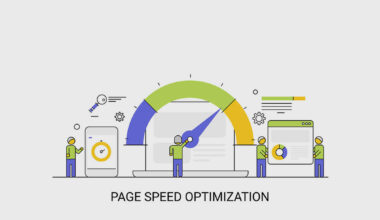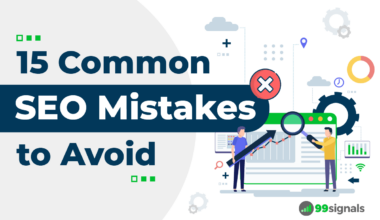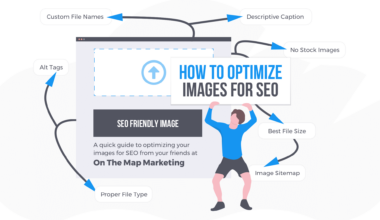Introduction to Multilingual SEO
As the world becomes more connected, businesses are expanding their reach across different regions and countries. To reach these diverse audiences, it’s crucial to optimize your website for different languages. This process is known as multilingual SEO.
Multilingual SEO involves optimizing your website to rank higher in the search engine results pages (SERPs) for different languages. It’s a complex process that requires thorough research, planning, and implementation.
The goal of multilingual SEO is to make your website easily accessible and understandable for users who speak different languages. By doing so, you can increase your website’s visibility, attract more traffic, and ultimately grow your business globally.
Multilingual SEO is not just about translating your content into different languages. It involves a range of technical considerations, including website structure, URL structure, and localized content.
In the following sections, we’ll explore the benefits of multilingual SEO, how to conduct multilingual keyword research, how to create multilingual content, and the technical considerations you need to keep in mind when optimizing your website for different languages.
Benefits of Multilingual SEO
Implementing multilingual SEO on your website can provide numerous benefits for your business. Here are some of the key advantages:
Increased Visibility:
By optimizing your website for different languages, you can increase your visibility and reach a broader audience. This means that users who search for keywords in their native language will be more likely to find your website in the search engine results pages (SERPs). This can lead to more traffic and potential customers for your business.
Competitive Advantage:
Implementing multilingual SEO can also give you a competitive advantage over other businesses that are only targeting a single language. By expanding your reach to different regions and languages, you can stand out among your competitors and attract more customers.
Improved User Experience:
Multilingual SEO involves not only translating content but also adapting it to the culture and preferences of different regions. This can improve the user experience for visitors who speak different languages and make them feel more comfortable on your website. By providing a seamless experience, you can increase the chances of visitors converting into customers.
Increased Conversions:
By providing content in different languages, you can increase the chances of users converting into customers. Visitors are more likely to engage with a website that speaks their language, and this can lead to increased sales and revenue for your business.
Better Search Rankings:
Implementing multilingual SEO can also improve your search rankings in different regions and languages. By optimizing your website for local keywords and phrases, you can increase your chances of ranking higher in the SERPs. This can lead to more traffic and potential customers for your business.
In conclusion, implementing multilingual SEO can provide numerous benefits for your business, including increased visibility, a competitive advantage, improved user experience, increased conversions, and better search rankings. By following best practices and investing in multilingual SEO, you can expand your reach globally and grow your business.
Multilingual Keyword Research
Before creating content for a multilingual website, it’s essential to conduct keyword research to identify the most relevant and high-volume keywords for each language. Here are some tips for conducting multilingual keyword research:
1. Identify Your Target Markets
The first step in multilingual keyword research is to identify the target markets for each language. For example, if you are targeting Spanish speakers, you need to determine which countries have Spanish as their primary language. Once you’ve identified your target markets, you can begin researching the keywords that are commonly used in those regions.
2. Use Localized Keyword Research Tools
Using localized keyword research tools can help you find the most relevant keywords for each language and region. These tools can provide you with insights into the specific phrases and terms that users are searching for in different languages. Some popular localized keyword research tools include Google AdWords Keyword Planner, SEMrush, and Ahrefs.
3. Translate Your Keywords
Once you’ve identified the keywords for each language, it’s crucial to translate them accurately. Simply translating your keywords using Google Translate or other translation tools may not provide you with the best results. Instead, consider hiring a professional translator or using a multilingual SEO agency to ensure that your keywords are translated accurately.
4. Analyze Your Competitors
Analyzing your competitors’ websites can help you identify the keywords that they are targeting and the content that is performing well in each language. This can give you insights into the keywords and content that you should be targeting to stay competitive.
5. Prioritize Long-Tail Keywords
Long-tail keywords are typically longer phrases that are more specific and have lower search volume but higher conversion rates. Prioritizing long-tail keywords can help you attract more targeted traffic and increase your chances of converting visitors into customers.
In conclusion, multilingual keyword research is a crucial step in optimizing your website for different languages. By identifying the most relevant and high-volume keywords for each language, you can create targeted content that attracts more traffic, increases conversions, and improves your search rankings. Remember to use localized keyword research tools, translate your keywords accurately, analyze your competitors, and prioritize long-tail keywords to achieve the best results.
Multilingual Content Creation
Creating content for a multilingual website involves more than just translating the text. It requires adapting the content to the language and culture of each target audience. Here are some tips for creating effective multilingual content:
1. Hire Professional Translators
To ensure that your content is accurately translated and localized, consider hiring professional translators who are native speakers of the target language. This will help you avoid awkward phrasing and cultural misunderstandings that may arise from automated translations.
2. Consider Cultural Differences
When creating content for different languages, it’s essential to consider cultural differences and adapt the content accordingly. For example, humor that works well in one culture may not be appreciated in another. You should also consider differences in tone, style, and formatting when creating content for different regions.
3. Use Localized Images and Graphics
Using images and graphics that are specific to each language and region can help you connect with your target audience and improve their user experience. Make sure to choose images and graphics that resonate with the local culture and preferences.
4. Localize Your URLs and Metadata
To improve your website’s visibility in different languages, it’s crucial to localize your URLs and metadata. This includes creating language-specific URLs and meta descriptions that accurately describe the content of each page. By doing so, you can improve your website’s search engine rankings and attract more targeted traffic.
5. Test Your Content
Before publishing your content, it’s important to test it with native speakers of the target language. This will help you identify any errors or cultural misunderstandings that may have been missed during the translation process. You can also use A/B testing to compare the performance of different versions of your content and optimize it for each region.
In conclusion, creating effective multilingual content requires more than just translating the text. You need to consider cultural differences, use localized images and graphics, localize your URLs and metadata, and test your content with native speakers. By following these best practices, you can create content that resonates with your target audience, improves their user experience, and helps you achieve your business goals.
Technical Considerations for Multilingual SEO
Optimizing your website for different languages requires careful attention to technical details. Here are some of the key technical considerations for multilingual SEO:
1. Choose the Right URL Structure
The URL structure of your website can impact your search rankings and user experience. For a multilingual website, it’s essential to choose a URL structure that makes it easy for users to switch between languages. There are three main options for URL structures:
-
Country Code Top-Level Domain (ccTLD)
: This involves using a different top-level domain for each language or country (e.g., example.fr for French, example.es for Spanish). This approach can be expensive and time-consuming to set up but can provide the best results for SEO and user experience. -
Subdomain
: This involves using a subdomain for each language or country (e.g., fr.example.com for French, es.example.com for Spanish). This approach can be easier to set up and manage than ccTLD but may not provide the same SEO benefits. -
Subdirectory
: This involves using a subdirectory for each language or country (e.g., example.com/fr for French, example.com/es for Spanish). This approach can be the easiest to set up and manage but may not provide the same SEO benefits as ccTLD or subdomain.
2. Use Hreflang Tags
Hreflang tags are HTML attributes that indicate to search engines which language and region a particular page is intended for. By using hreflang tags, you can avoid duplicate content issues and ensure that users are directed to the appropriate language version of your website. Here’s an example of how to use hreflang tags:
<link rel="alternate" hreflang="en" href="https://example.com/en/"> <link rel="alternate" hreflang="fr" href="https://example.com/fr/"> <link rel="alternate" hreflang="es" href="https://example.com/es/">
3. Translate Your Metadata
In addition to translating your content, it’s essential to translate your metadata (such as your page titles and meta descriptions) for each language. This can improve your search rankings and user experience for users who speak different languages. Make sure to use targeted keywords and phrases in your metadata to improve your website’s visibility in each language.
4. Use Language-Specific Sitemaps
Final Thought on Multilingual SEO
Multilingual SEO is a crucial process for businesses looking to expand their reach and grow globally. By optimizing your website for different languages, you can increase your visibility, attract more traffic, and ultimately increase your revenue.
To achieve the best results with multilingual SEO, it’s essential to follow best practices and pay attention to technical details. This includes conducting thorough multilingual keyword research, creating effective content that resonates with your target audience, and optimizing your website’s structure and metadata for different languages.
It’s also important to keep in mind that multilingual SEO is an ongoing process that requires continuous optimization and adaptation. As your business grows and expands into new regions and languages, you’ll need to continue refining your multilingual SEO strategy to stay competitive.
Overall, investing in multilingual SEO can provide numerous benefits for your business, including increased visibility, a competitive advantage, improved user experience, increased conversions, and better search rankings. By following best practices and investing in multilingual SEO, you can expand your reach globally and achieve your business goals.






















